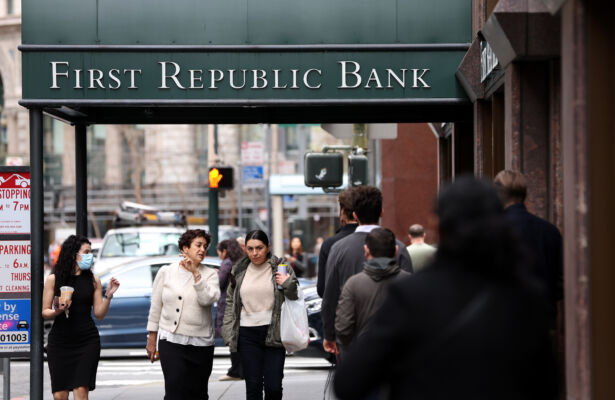Not raising the debt limit in a “timely manner” could pose a substantial risk to the financial system and the broader U.S. economy, according to minutes from the May Federal Open Market Committee (FOMC) policy meeting.
FOMC participants assessed the Treasury Department’s forecast that the federal government would be unable to fully satisfy its obligations as early as June 1 without a debt limit increase or suspension. But the minutes revealed that the projected X-date may happen later than Secretary Janet Yellen’s projected deadline.
“The actual date this event would occur might come a number of weeks later,” the minutes stated.
“Yields on Treasury bills and coupon securities maturing in the first half of June increased notably amid significant volatility.”
FOMC participants also discussed the banking turmoil, averring that the situation has stabilized. Deposit outflows from small- and mid-sized banks “largely stopped” at the end of March and April. The closure and acquisition of the First Republic Bank “were seen as orderly,” despite investors still concentrating on stresses in the financial sector.
“With regard to vulnerabilities associated with funding risks, the staff assessed that although funding strains had been notable for some banks, such strains remained low for the banking system as a whole, especially in light of official interventions by the Federal Reserve, the Federal Deposit Insurance Corporation, and the U.S. Department of Treasury to support bank depositors,” the minutes said. “Outflows of funds from bank deposits in mid-March, which were concentrated at a limited number of banks, had slowed.”
Officials also purported that banks are in a stronger position than they were before the global financial crisis more than a decade ago.
“In terms of financial-sector leverage, going into the period of recent bank stress, banks of all sizes appeared strong, with substantial loss-absorbing capacity as measured by regulatory capital ratios well above levels that prevailed before the Great Recession,” the minutes said.
Looking ahead, FOMC participants think stress in the banking sector over the coming quarters would likely force financial institutions to tighten lending standards by more than they would have by rising interest rates alone.

Still, the banking volatility is expected to lead to a credit crunch amid a climate of tight financial conditions from the central bank’s rate hikes. As a result, staff economists anticipate a “mild recession” later this year, “followed by a moderately paced recovery.”
Real GDP is projected to decelerate over the next two quarters and then “decline modestly” in the fourth quarter of 2023 and the first quarter of 2024. Real GDP growth in 2024 and 2025 was forecast to come in under the staff’s estimate of possible output growth.
The labor markets are expected to slow, with the unemployment rate projected to rise this year, peak in 2024, and decline gradually in 2025.
What Fed Officials Are Saying
FOMC members widely expected a quarter-point increase to the benchmark fed funds rate, with some seeing the rate at the “likely peak for the current tightening cycle,” according to the minutes.
Fed Governor Christopher Waller does not expect the central bank’s hiking campaign to end, although a rate pause may be possible at next month’s FOMC policy meeting.
“I do not support stopping rate hikes unless we get clear evidence that inflation is moving down towards our 2% objective,” he said in prepared remarks at a University of California Santa Barbara Economic Forecast Project event. “But whether we should hike or skip at the June meeting will depend on how the data come in over the next three weeks.”
Atlanta Fed Bank President Raphael Bostic supports a rate pause and prefers to leave the policy rate as is to determine how higher rates are impacting the economy.
“Our policy works with a lag. We’re just at the very beginning of this time when that lag is starting to play out and you’re starting to see tightness emerge,” Bostic told Atlanta Fed’s 2023 Financial Markets Conference.
A June rate pause may be the likely scenario, but it would not indicate an end to the institution’s hiking cycle, says Minneapolis Fed Bank President Neel Kashkari.
“If we were to skip in June, that does not mean we’re done with our tightening cycle. It means to me we’re getting more information,” he said in an interview with CNBC on May 22.
Dallas Fed Bank President Lori Logan acknowledged that the Fed’s 10 straight rate hikes have allowed the central bank to make some progress. But it may not be enough to restore price stability.
“The data in coming weeks could yet show that it is appropriate to skip a meeting,” Logan said at a Texas Bankers Association event on May 18. “As of today, though, we aren’t there yet.”
In an academic paper (pdf) published on May 23, former Fed Chair Ben Bernanke wrote that the central bank has more work to do to fight inflation.
According to the CME FedWatch Tool, investors mostly expect monetary policymakers to leave the target rate at 5.00 and 5.25 percent. But looking to the July FOMC meeting, the futures market is signaling a rate hike.
From The Epoch Times


